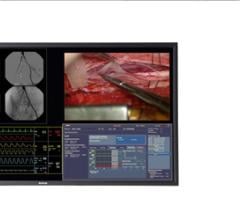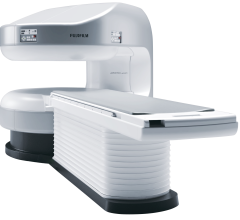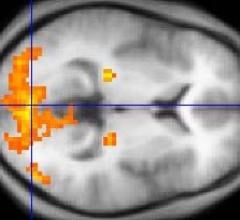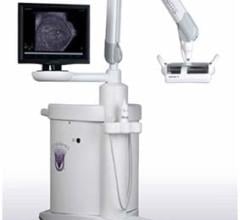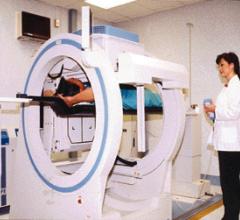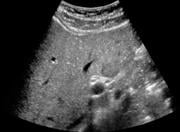Eliot Siegel, M.D., FSIIM, FACR, who is on the Board of Directors of the Society for Imaging Informatics in Medicine ...
Only a few years ago, separate software systems without a common interface were the industry standard to manage electrocardiograms (ECGs), hemodynamic monitoring systems in the cath lab, picture archiving and communications systems (PACS), electrophysiology, cardiac ultrasound and other areas of cardiac specialty.
May 19, 2011 - Barco has launched the Mammo Tomosynthesis 5 MP, the first display system that has been cleared by the U.S. Food and Drug Administration (FDA) for breast tomosynthesis. The display comes with some groundbreaking technologies specifically developed for multi-modality mammography.
Fujifilm’s APERTO Lucent is a 0.4T mid-field, open MRI system addressing today’s capability and image quality needs ...
May 19, 2011 – With obesity on the rise, today’s radiology departments are continually challenged to provide diagnostic imaging solutions to improve clinical accuracy for bariatric imaging without sacrificing patient care. Toshiba America Medical Systems Inc. has announced U.S. Food and Drug Administration (FDA) clearance for an extra-large knee Array coil for the Vantage Titan magnetic resonance imaging (MRI) system. Toshiba is the first diagnostic imaging vendor to offer an extra-large knee coil with a 22 cm interior diameter for MRI imaging.
May 19, 2011— GE Healthcare announced U.S. Food and Drug Administration clearance of Ready View, a new MRI advanced visualization platform to help clinicians process and analyze images anytime and anywhere. A part of the Dexus workflow, READY Ready is accessible through any PC, PACS or RIS workstation, allowing access to process and analyze images in any office, meeting room or even at home.

SPONSORED CONTENT — Fujifilm’s latest CT technology brings exceptional image quality to a compact and user- and patient ...
May 19, 2011 - U-Systems launched a new transducer technology designed to deliver unparalleled imaging performance and patient comfort. Reverse-Curve Crystal (RCC) Transducer Technology was designed and optimized for use with the U-Systems’ somo•v Automated Breast Ultrasound (ABUS) system. The announcement was made at the 10th Post Graduate Course of the Society of Breast Imaging (SBI) Meeting, in San Antonio, May 18- 21.
SPONSORED CONTENT — Fujifilm’s latest CT technology brings exceptional image quality to a compact and user- and patient ...
May 19, 2011 - The possibility of low-dose molecular breast imaging (MBI) looks promising, according to the most recent clinical evidence revealed this past month at the National Institutes of Health (NIH). Marcela Bohm-Velez, M.D., and her colleagues from Associates in Pittsburgh, Pa., shared preliminary results from a prospective study on low-dose MBI, specifically breast-specific gamma imaging (BSGI), at the SNM Breast Cancer Imaging: State of the Art 2011. Their results suggest it may be possible to reduce the radiation dose patients receive from a BSGI procedure by up to 60 percent.
May 19, 2011 — Carestream Health announced an agreement with PenRad Technologies of Minnetonka, Minn., to market PenRad’s patient tracking and mammography information system (MIS) to U.S. healthcare providers. PenRad systems can be seamlessly integrated with Carestream Health’s mammography workstation, which can be connected to a PACS from Carestream Health or other vendors.
May 18, 2011, – Lantheus Medical Imaging Inc. announced data from a Phase 2 clinical trial that demonstrated positron emission tomography (PET) myocardial perfusion imaging with flurpiridaz F 18 provided superior image quality, diagnostic certainty and diagnostic performance for detecting coronary artery disease (CAD) compared to single photon emission computed tomography (SPECT) myocardial perfusion imaging (MPI), the current standard for the non-invasive detection of CAD. The data also demonstrated a positive safety profile for PET imaging with flurpiridaz F 18.
SPONSORED CONTENT — EnsightTM 2.0 is the newest version of Enlitic’s data standardization software framework. Ensight is ...
May 18, 2011 - The Society for Imaging Informatics in Medicine (SIIM) announces tools and training to help medical informaticsprofessionals stay competitive in a rapidly changing environment. SIIM will provide fundamental, up-to-date education and solutions essential for imaging informatics professionals (IIPs) and their organizations at the society's 2011 annual meeting, June 2-5, in Washington, D.C./National Harbor, Md.
As hospitals and imaging centers are transitioning more from film to digital imaging systems, the monitors displaying those images become a critical part of the equation. Accordingly, the DICOM standard developed by the American College of Radiology (ACR) and the National Electrical Manufacturers Association (NEMA) include a complete section (Part 14) relating pixel values to displayed luminance levels and defining a grayscale standard display function (GSDF) to help achieve accuracy and consistency.
Several trends in advanced visualization software were highlighted at the 2010 Radiological Society of North America (RSNA) meeting. The biggest advance was software to create a video loop of a dynamic 3-D dataset from computed tomography (CT) or magnetic resonance imaging (MRI) to show life-like anatomical function. Other trends included software now being accessible on the Internet via thin-client computers, compatibility with the iPad and smart phones, and the addition of more advanced software to enhance images and automate workflow and measurements.
Did you know that approximately one-third of all the data in world is created by the healthcare industry and that ...
The medical imaging market is poised for growth, and among the areas showing great promise are hybrid systems, especially positron emission tomography/computed tomography (PET/CT), according to a new report, “Medical Imaging Markets,” by TriMark Publications. The report’s executive summary also notes the growing popularity of single photon emission computed tomography/computed tomography (SPECT/CT) in U.S. and global markets.
The last couple of years in the United States and Europe have seen an increased focus on the cumulative patient dose received from a wide variety of X-ray devices including classical X-ray, computed tomography (CT), interventional radiology and mammography. The deleterious effects of radiation dose have received widespread coverage, and the partial answer has been a movement towards non-ionizing diagnostic imaging equipment, such as magnetic resonance imaging (MRI) and ultrasound.
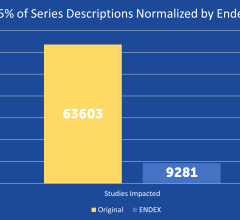
SPONSORED CONTENT — EnsightTM 2.0 is the newest version of Enlitic’s data standardization software framework. Ensight is ...
Radiologist Stephen L. Rose, M.D., knows that experienced breast radiologists paired with state-of-the-art equipment can make a life-saving difference in the early detection and diagnosis of breast cancer. A board-certified breast radiologist, Dr. Rose has been a big believer in the potential for tomosynthesis technology for more than five years.
As meaningful use standards become a crucial component of medical care, many hospitals and clinics are looking to upgrade or even fully replace their picture archive and communication systems (PACS). Such a switch is not something to be taken lightly, and the solution often isn’t as simple as “plug and play.” Typically, hundreds of thousands of images from numerous modalities need to be converted to the new system. And aside from choosing a system that best suits their individual needs, organizations need to consider a range of factors, from network security and HIPAA to cost and staff training.
As the imaging industry has looked for methods to achieve lower doses, especially in computed tomography (CT), many systems vendors have focused on utilizing software as one way to do it. GE Healthcare and Siemens are two of the companies offering dose reduction software technologies. Described below are their products and recent efforts.
The use of computed tomography (CT), magnetic resonance imaging (MRI) and other high-tech diagnostic imaging (HTDI) scans increased 8 percent a year from 2003 to 2006 in Minnesota. There was concern that this potential overuse could expose patients to unnecessary radiation, plus contribute significantly to unsustainable increases in healthcare costs.
Founded in 2010 by Helen Mrose, M.D., Bay Radiology provides advanced screening and diagnostic digital mammography, screening and diagnostic breast ultrasound, ultrasound-guided cyst aspiration, ultrasound-guided core biopsy and stereotactic core biopsy.
This article appeared as the introduction to the CT Dose Reduction comparison chart.


 May 20, 2011
May 20, 2011 
